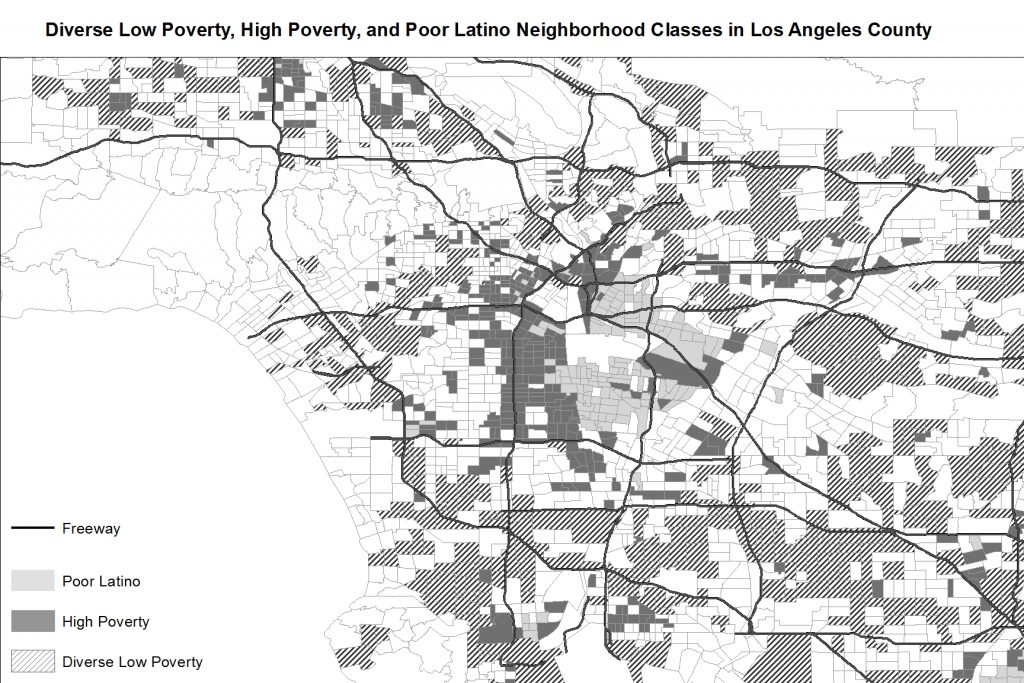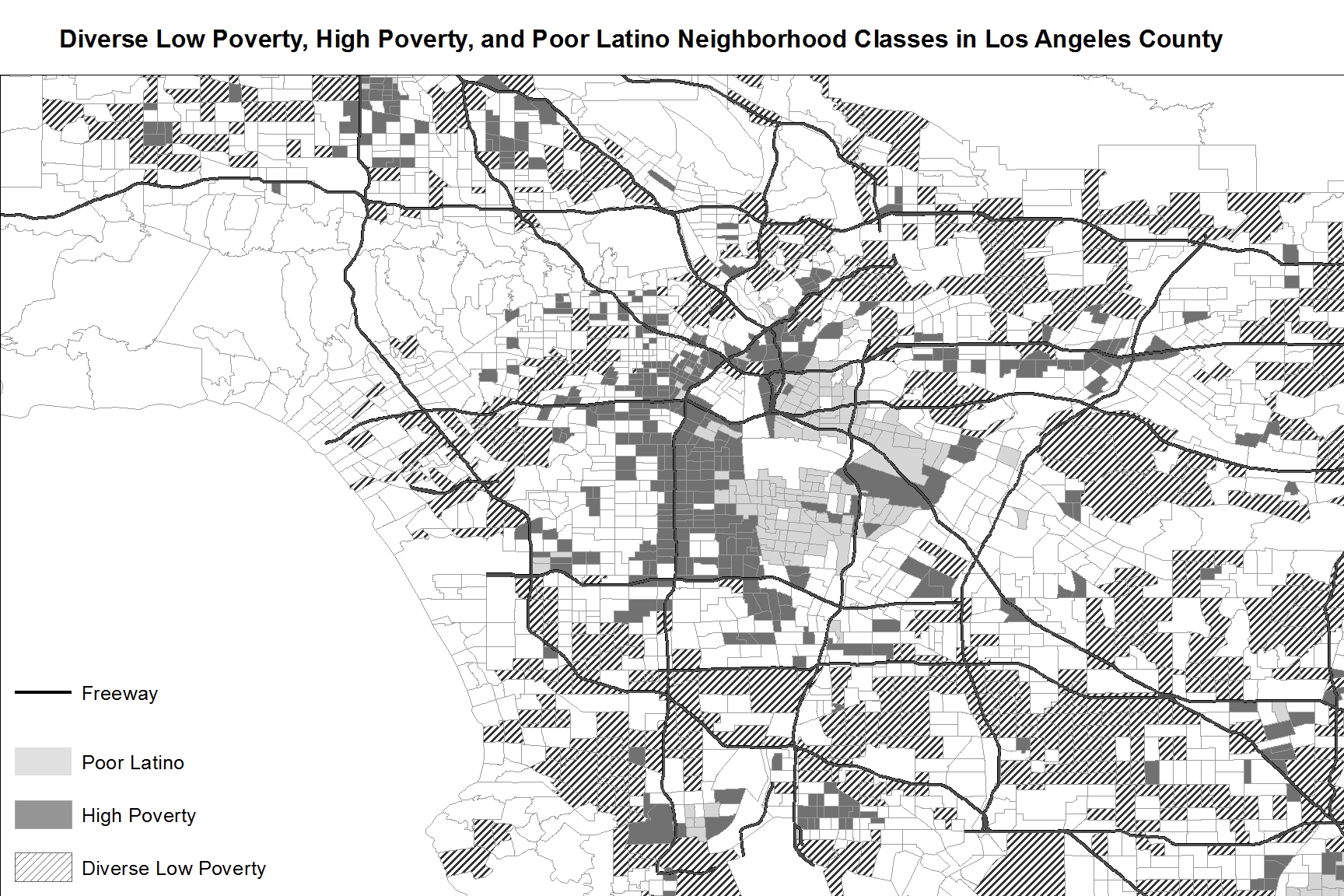This study encourages researchers to turn away from the common variable-centered approach– adopting instead a “neighborhood-centered” approach– to consider how neighborhood structural forces of interest in social disorganization theory combine into unique constellations or patterns that vary across communities, with consequences for crime. Examining neighborhoods in Southern California we: (1) identify neighborhood typologies based on levels of poverty, instability, and heterogeneity; (2) explore how these typologies fit within a disorganization framework and are spatially distributed across the region; and (3) examine how these typologies are differentially associated with crime. Results reveal nine neighborhood types with varying relationships to crime.
You can access the article by Dr. Charis E. Kubrin, Nicholas Branic, and Dr. John R. Hipp in the journal Crime & Delinquency entitled, “(Re)conceptualizing Neighborhood Ecology in Social Disorganization Theory: From a Variable-Centered Approach to a Neighborhood-Centered Approach”.
Abstract: “Shaw and McKay advanced social disorganization theory in the 1930s, kick-starting a large body of research on communities and crime. Studies emphasize individual impacts of poverty, residential instability, and racial/ethnic heterogeneity by examining their independent effects on crime, adopting a variable-centered approach. We use a “neighborhood-centered” approach that considers how structural forces combine into unique constellations that vary across communities, with consequences for crime. Examining neighborhoods in Southern California we: (1) identify neighborhood typologies based on levels of poverty, instability, and heterogeneity; (2) explore how these typologies fit within a disorganization framework and are spatially distributed across the region; and (3) examine how these typologies are differentially associated with crime. Results reveal nine neighborhood types with varying relationships to crime.”
The map below shows three of the neighborhood classes we detected in the typology, and shows their relative locations across a portion of Los Angeles County centered on downtown Los Angeles.

